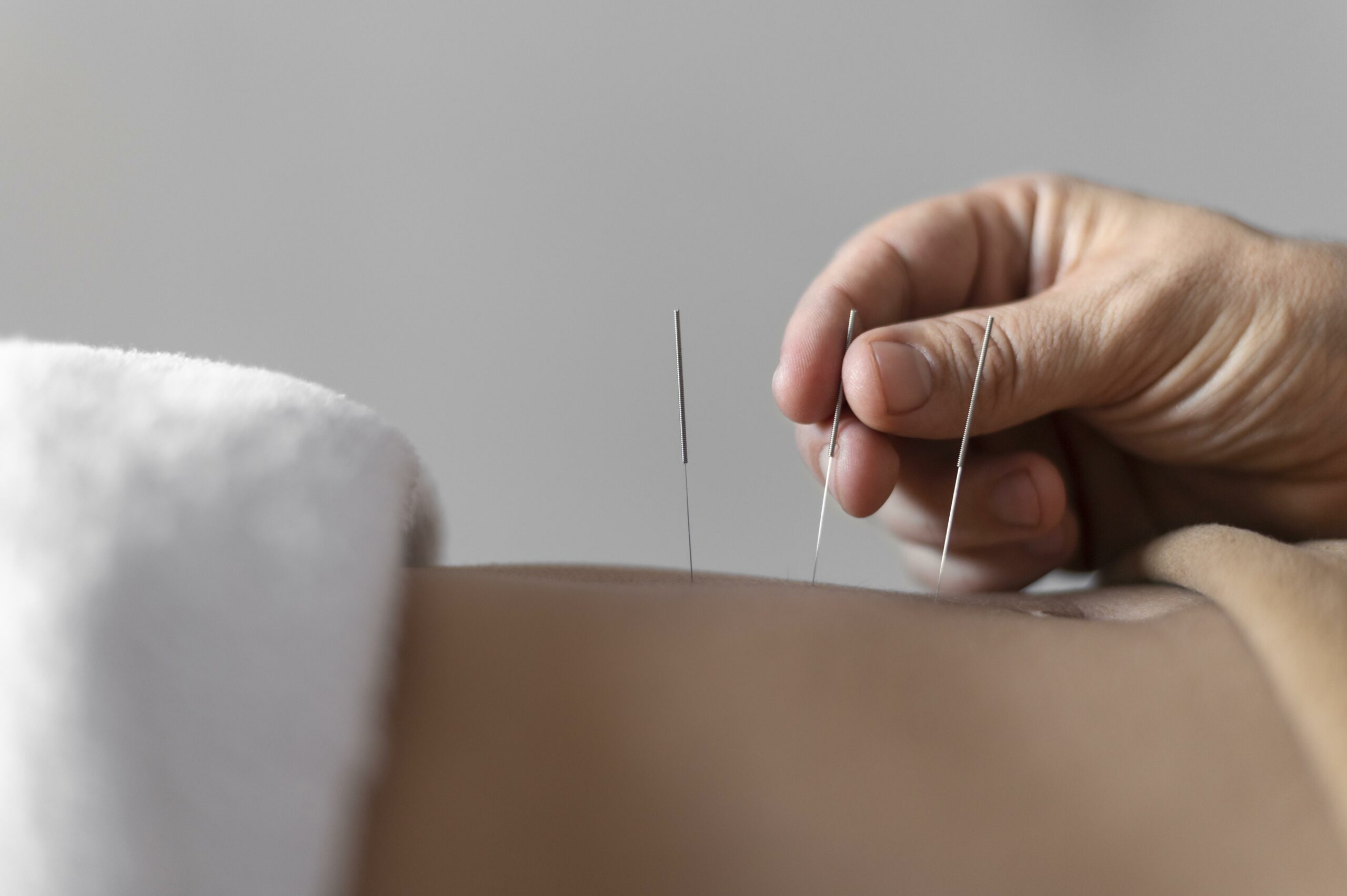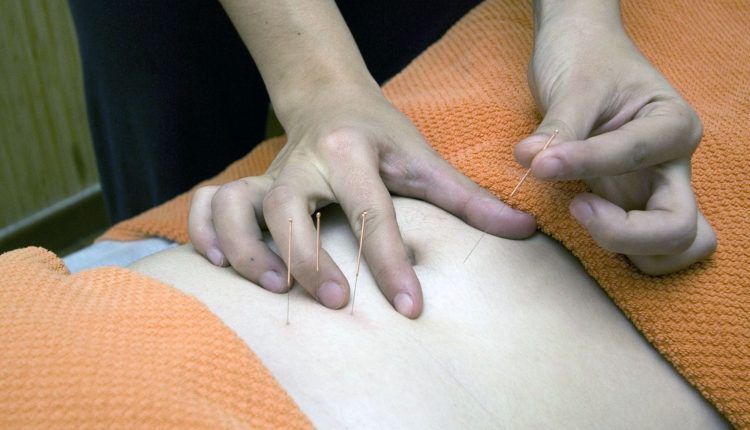HOW TO USE ACUPUNCTURE FOR PIRIFORMIS SYNDROME PAIN RELIEF

Piriformis syndrome is a condition that involves the irritation or compression of the piriformis muscle and the nearby sciatic nerve. The piriformis muscle is located deep in the buttocks, and the sciatic nerve runs from the lower back down through the hips and into the legs. When the piriformis muscle becomes tight, inflamed, or spasms, it can put pressure on the sciatic nerve, leading to a range of symptoms. Here’s a comprehensive explanation of piriformis syndrome:
1. Anatomy of Piriformis Muscle: The piriformis muscle is a small, flat muscle located deep within the buttocks, connecting the lower spine (sacrum) to the upper part of the thigh bone (femur). Its primary function is to assist in rotating the hip and turning the leg outward.
2. Causes of Piriformis Syndrome: Piriformis syndrome can be caused by various factors:
• Muscle Tightness or Spasm: The piriformis muscle can become tight or go into spasms due to overuse, injury, or biomechanical abnormalities.
• Anatomical Variations: In some individuals, the sciatic nerve passes through or under the piriformis muscle, increasing the likelihood of compression.
• Trauma: Direct trauma to the buttocks, such as a fall or impact, can lead to inflammation of the piriformis muscle.
3. Symptoms: Piriformis syndrome presents with symptoms that are often similar to those of sciatica (nerve pain radiating down the leg):
• Pain: Pain is typically felt deep in the buttocks and can radiate down the back of the leg, sometimes reaching the calf or foot.
• Numbness and Tingling: Numbness, tingling, or a pins-and-needles sensation can occur along the path of the sciatic nerve.
• Aggravation: Activities that involve prolonged sitting, walking, running, or climbing stairs can exacerbate symptoms.
• Buttock Discomfort: Pain or discomfort may worsen when sitting on hard surfaces.
4. Diagnosis: Diagnosing piriformis syndrome involves a combination of medical history, physical examination, and sometimes imaging tests:
• Physical Examination: A healthcare provider may perform certain movements and tests to reproduce the patient’s pain and assess muscle strength and range of motion.
• Imaging: Imaging tests like MRI or ultrasound may be used to rule out other conditions and evaluate the piriformis muscle and sciatic nerve.
5. Treatment: Treatment for piriformis syndrome aims to relieve pain and address the underlying cause:
• Rest and Activity Modification: Avoiding activities that exacerbate symptoms and incorporating rest is often the initial step.
• Stretching and Exercises: Gentle stretching and strengthening exercises can help improve flexibility and alleviate muscle tightness.
• Physical Therapy: A physical therapist can provide specific exercises and manual techniques to address muscle imbalances and improve mobility.
• Heat and Cold Therapy: Applying heat or cold to the affected area can help reduce pain and inflammation.
• Medications: Over-the-counter pain relievers and anti-inflammatories may provide short-term relief.
• Injections: In some cases, corticosteroid injections into the piriformis muscle can reduce inflammation and alleviate pain.
6. Prevention: Preventing piriformis syndrome involves maintaining proper posture, practicing regular stretching and strengthening exercises, and avoiding prolonged sitting.
7. Surgical Intervention: Surgery is rarely considered for piriformis syndrome and is typically reserved for cases where conservative treatments have not been effective and other potential causes have been ruled out.
Piriformis syndrome can be complex to diagnose and treat due to its similarity to other conditions like herniated discs and sciatica. Consulting a healthcare professional is crucial to determine the accurate diagnosis and develop an appropriate treatment plan tailored to the individual’s needs and circumstances.
Acupuncture is an alternative therapy that involves inserting thin needles into specific points on the body to stimulate energy flow and promote natural healing. While the use of acupuncture for piriformis syndrome pain relief is not extensively studied, it is believed to have the potential to alleviate discomfort by promoting relaxation, improving circulation, and reducing muscle tension. Here’s a guide on how acupuncture might be used for piriformis syndrome pain relief:
1. Consultation:
• Begin by consulting a licensed acupuncturist who has experience in treating musculoskeletal issues. They will assess your condition, medical history, and symptoms to determine if acupuncture is a suitable option for your piriformis syndrome.
2. Treatment Plan:
• The acupuncturist will create a personalized treatment plan based on your individual needs. The plan may involve a series of acupuncture sessions to achieve the best results.
3. Acupuncture Session:
• During the acupuncture session:
• You’ll lie down in a comfortable position on a treatment table.
• The acupuncturist will insert thin, sterile needles into specific acupoints on your body. Some of these points might be near the piriformis muscle or along related meridians.
• The needles are typically left in place for about 20-30 minutes. You may experience a mild sensation or tingling during insertion, but it shouldn’t be painful.
• Many people find acupuncture sessions relaxing and may even fall asleep during the treatment.
4. Potential Benefits:
• Acupuncture is thought to have several potential benefits for piriformis syndrome pain:
• Muscle Relaxation: Acupuncture might help relax the piriformis muscle, reducing tension and potential compression of the sciatic nerve.
• Pain Relief: Acupuncture can trigger the release of endorphins, which are natural pain-relieving substances, potentially alleviating pain associated with piriformis syndrome.
• Improved Circulation: Acupuncture is believed to enhance blood circulation, which can aid in tissue healing and reduce inflammation.
5. Multiple Sessions:
• Acupuncture is often not a one-time solution. Multiple sessions are typically recommended to achieve lasting results. The number of sessions required can vary based on the severity of your symptoms and how your body responds to treatment.
6. Communication:
• Throughout the treatment process, maintain open communication with your acupuncturist. Discuss your pain levels, any changes in symptoms, and your overall experience. This feedback helps them tailor the treatment to your needs.
7. Integrative Approach:
• Acupuncture can be used as part of an integrative approach to piriformis syndrome pain relief. It can complement other treatments such as physical therapy, stretching exercises, and lifestyle modifications.
8. Professional Guidance:
• It’s important to consult your healthcare provider before starting any new treatment approach, including acupuncture. They can offer guidance based on your overall health and medical history.
While individual responses to acupuncture can vary, many people find it to be a relaxing and potentially beneficial therapy for managing musculoskeletal pain. As with any treatment, consulting a healthcare professional and working with a licensed acupuncturist is essential for a safe and effective approach to piriformis syndrome pain relief.
Relationship between Acupuncture and Pain Relief
The relationship between acupuncture and pain relief is rooted in the principles of traditional Chinese medicine (TCM) and the understanding of the body’s energy flow, known as Qi (pronounced “chee”). Acupuncture is an ancient practice that involves inserting thin needles into specific points on the body to stimulate these energy pathways and promote healing. While the exact mechanisms are still being studied, acupuncture is believed to influence the nervous system, release natural pain-relieving substances, and restore balance in the body. Here’s how acupuncture is thought to provide pain relief:
1. Nervous System Modulation: Acupuncture is believed to influence the autonomic nervous system, which controls involuntary bodily functions. The insertion of needles at specific acupoints can stimulate sensory nerves, sending signals to the brain that affect pain perception and trigger various responses.
2. Endorphin Release: Acupuncture is thought to trigger the release of endorphins, which are the body’s natural pain-relieving and mood-enhancing chemicals. These endorphins help reduce pain perception and promote a sense of well-being.
3. Gate Control Theory: Acupuncture may activate the “gate control theory” of pain. According to this theory, stimulating certain nerve fibers through acupuncture can close the “gate” to pain signals, preventing them from reaching the brain and reducing the perception of pain.
4. Neurotransmitter Balance: Acupuncture may influence the release of neurotransmitters, such as serotonin and dopamine, which play roles in pain modulation and mood regulation. This can contribute to the overall reduction of pain sensation.
5. Blood Flow and Circulation: Acupuncture is believed to enhance blood circulation in the body. Improved blood flow can help deliver oxygen and nutrients to injured or tense tissues, promoting healing and reducing pain.
6. Anti-Inflammatory Effects: Studies suggest that acupuncture might have anti-inflammatory effects by modulating the immune response. This can help reduce swelling and inflammation that contribute to pain.
7. Qi and Meridians: In TCM, pain is often seen as a result of blocked or disrupted Qi flow in the body’s meridians (energy pathways). Acupuncture aims to restore the smooth flow of Qi, addressing imbalances and promoting pain relief.
8. Holistic Approach: Acupuncture takes a holistic approach to pain relief, considering not only the physical symptoms but also emotional, psychological, and energetic factors that contribute to pain. By addressing the whole person, acupuncture aims to restore overall well-being.
9. Individualized Treatment: Acupuncture treatments are tailored to the individual’s specific condition, pain type, and overall health. Acupuncturists consider factors such as the location and intensity of pain, the person’s medical history, and the underlying causes of pain.
While research on acupuncture’s exact mechanisms is ongoing, many individuals report experiencing pain relief and improved well-being after acupuncture sessions. Acupuncture is commonly used to address various types of pain, including musculoskeletal pain, headaches, chronic pain conditions, and more. However, it’s important to note that individual responses can vary, and acupuncture is often best used as part of a comprehensive pain management approach that includes medical advice, lifestyle changes, and other appropriate treatments. Consulting with a licensed acupuncturist and medical professionals can help determine if acupuncture is a suitable option for your specific pain relief needs.


Comments are closed.